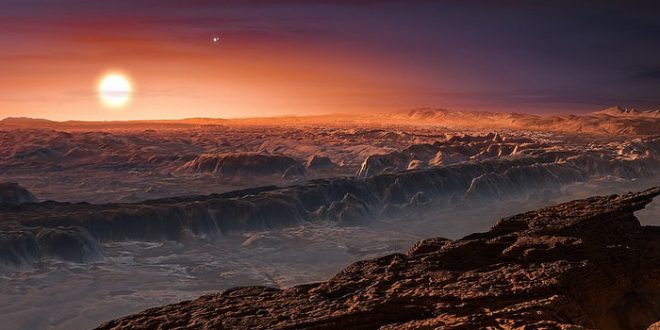Scientists from The National Center For Scientific Research (CNRS) in France has announced the existence of at least one ocean in Proxima b. The recent study adds more possibility of alien life in the newly discovered exoplanet.
Proxima b orbits the red dwarf star Proxima Centauri, the closest known star to the sun. While Proxima b’s orbit is much smaller than Mercury’s, the host star’s small size, around 12 percent that of our Sun, and lower solar output means Proxima b sits inside the “Goldilocks zone” – an area where liquid water can exist.
“Contrary to what one might expect, such proximity does not necessarily mean that Proxima b’s surface is too hot,” the researchers said.
A different essential factor in figuring out an exoplanet’s habitability is its size. This is generally established by watching the planet during its transit, when it passes between its host star and us here on Earth. However, the relative positions of the two planets make the probability of seeing such a transit extremely low, just 1.5 percent, according to some estimates.
Using Computer Models to Learn about Proxima B
In the new study, researchers used computer models to learn details about the newly-discovered planet. The study team said they used a model of Proxima b’s internal structure to explore different compositions that Proxima b could have and established the radius of the planet. They limited their scope to “potentially habitable, dense and solid planets, formed of a metallic core and a rocky mantle.”
The study team found the planet’s radius is between 0.94 and 1.4 times that of Earth. If it’s close to the smaller end, the planet would be very compact and would have a metallic core making up two-thirds of its mass. In this case, any surface water would make up approximately 0.05 percent of the planet’s overall mass, which is similar to Earth, where it makes up about 0.02 percent of the mass.
Conversely, if the upper end of the approximate is correct, Proxima b’s mass would be divided evenly between a rocky middle and surrounding water, and it would be draped with a single, gigantic ocean over 120 miles deep.
“In both cases, a thin, gassy atmosphere could surround the planet, like on Earth, rendering Proxima b potentially habitable,” the researchers concluded.
Agencies/Canadajournal

 Canada Journal – News of the World Articles and videos to bring you the biggest Canadian news stories from across the country every day
Canada Journal – News of the World Articles and videos to bring you the biggest Canadian news stories from across the country every day

